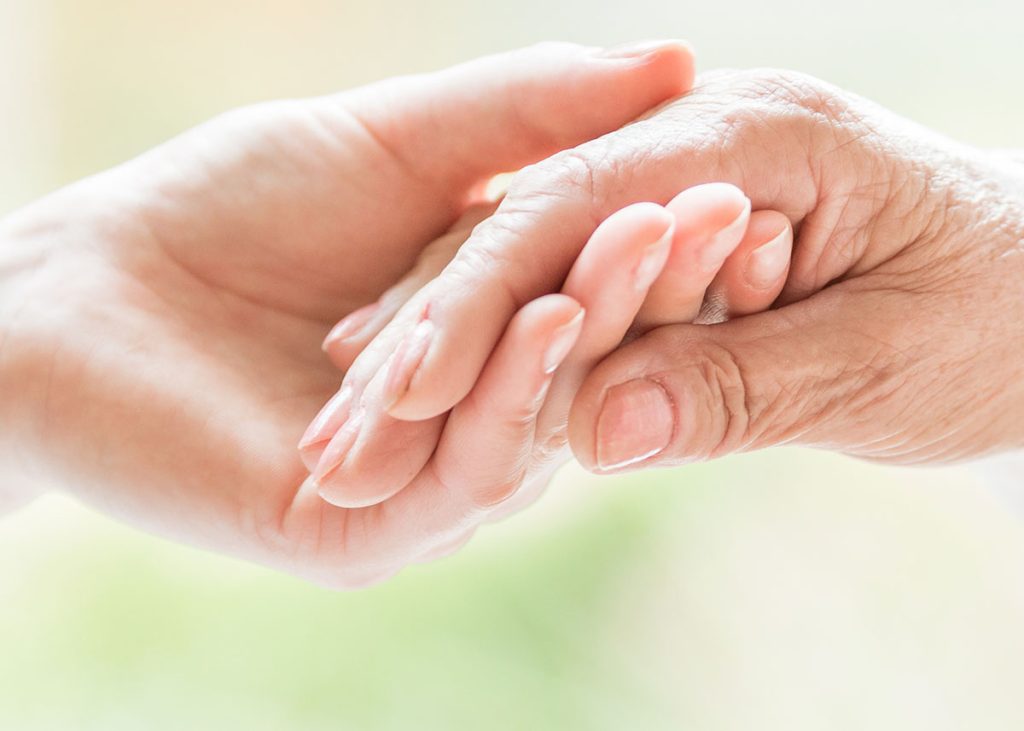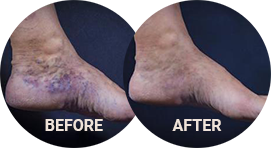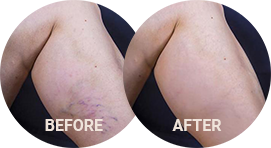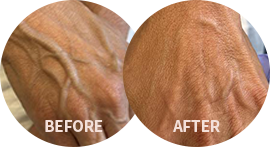Raynaud’s Disease
Conveniently located to serve the areas of Westlake, OH

Raynaud’s disease is a condition that affects the blood vessels, particularly in the fingers, toes, hands, and feet. It is a circulation disorder characterized by episodes of vasospasm, where the blood vessels constrict and limit blood flow to these extremities. This can result in discomfort, pain, and changes in skin color, ranging from white or blue to red.
If you suspect that you may have Raynaud’s disease, it is important to seek medical attention for a proper diagnosis and to rule out any underlying conditions. Dr. David Naar at Premier Vein Clinic in Westlake is a trusted specialist and vascular surgeon who can provide expert evaluation and treatment options tailored to your specific needs.
Call (440) 641-0433 to schedule an appointment or complete a short form on our website to take the first step toward managing Raynaud’s symptoms effectively.
Contents
About Raynaud’s Disease
Raynaud’s disease is a relatively common condition, affecting an estimated 5–20% of women and 4–14% of men. (1) Its exact cause is not fully understood, but it is believed to be a combination of factors including:
- Cold Temperatures
- Stress
- Certain Autoimmune Disorders
When exposed to cold temperatures or experiencing emotional stress, the blood vessels in the affected areas overreact and narrow, causing reduced blood flow and oxygen supply.
Symptoms of Raynaud’s disease may include numbing or tingling sensations, coldness, throbbing, or stinging pain in the affected areas. During an episode, the affected fingers or toes may change color. The three phases are as follows: (1)
- Ischemic Phase – white (pallor, “white attack”)
- Deoxygenation Phase – blue (cyanosis)
- Reperfusion Phase – red (erythema)
Some people may not go through all three color-changing stages. Many patients notice that the skin color changes do not affect the thumb. (2)
Who is More Likely to Have Raynaud’s?
You are more likely to have Raynaud’s if you:
- Are young
- Are female
- Have a low Body Mass Index (BMI)
- Are under stress
- Live in a cold climate
- Have a family member with Raynaud’s
Primary & Secondary Raynaud’s Phenomenon
There are two types of Raynaud’s, primary and secondary. Primary Raynaud’s, also known as Raynaud’s disease is caused by alpha-2 adrenergic sensitivity in the fingers and toes, a hormone sensitivity that causes a vasoconstrictive response to cold temperatures and emotional stressors. (1)
Secondary Raynaud’s, also known as Raynaud’s syndrome, is associated with underlying issues, such as: (3)
- Diseases – including scleroderma, lupus, and rheumatoid arthritis
- Medications – including migraine medications, blood pressure medication, and ADHD medication
- Work-related exposure – such as jackhammer use or other vibrating machinery
Raynaud’s and Scleroderma
Scleroderma, also known as systemic sclerosis, is a rare autoimmune condition in which the skin produces too much collagen. This can cause a tightening and thickening of the skin, and can also affect internal organs. As one of the earliest symptoms of scleroderma, Raynaud’s is present in 95% of cases. (2)
Living with Raynaud’s
Living with Raynaud’s disease can be challenging, as it can significantly impact one’s quality of life. Simple everyday activities, like holding a cold object or being exposed to chilly weather, can trigger painful episodes. The cold-induced spasms can lead to digital ischemia, which is a lack of blood supply to the affected areas. This can result in numbness, tingling, pain, and even tissue damage in severe cases.
Is there a Cure for Raynaud’s?
While there is no cure for Raynaud’s Disease, there are various treatment options available to manage and alleviate the symptoms. Lifestyle modifications, such as keeping the extremities warm, avoiding cold exposure, and managing stress, can help reduce the frequency and severity of episodes.
Find out more about vascular conditions at Premier Vein Clinic. Call (440) 641-0433 to book your appointment with us.
Treatments for Raynaud’s
At Premier Vein Clinic, we understand the impact that Raynaud’s Disease can have on your daily life. That’s why Dr. Naar, our experienced vascular specialist, offers a comprehensive range of medications to help manage the symptoms of this condition and improve your quality of life.
- Calcium Channel Blockers: Considered the “gold standard” treatment, these medications relax and widen the blood vessels, improving blood flow and reducing the frequency and severity of Raynaud’s attacks.
- Vasodilators: Similar to calcium channel blockers, vasodilators also work by relaxing and expanding the blood vessels, promoting better circulation to the affected areas.
- Alpha Blockers: These medications block the effects of certain hormones that constrict blood vessels, helping to prevent episodes of Raynaud’s Disease.
- Prostaglandin Analogs: These medications mimic the effects of naturally occurring substances in the body that promote blood vessel relaxation and dilation.
- Nitroglycerin Cream: Applied topically to the affected areas, nitroglycerin cream helps to increase blood flow and alleviate symptoms associated with Raynaud’s Disease.
- Topical Nitrates: Similar to nitroglycerin cream, topical nitrates also aid in improving blood flow and reducing symptoms when applied directly to the skin.
- Anti-Inflammatory Drugs: Nonsteroidal anti-inflammatory drugs (NSAIDs) can help reduce inflammation and relieve pain associated with Raynaud’s Disease.
- Immunosuppressive Medications: In some cases, immunosuppressive medications may be prescribed to manage severe cases of Raynaud’s Disease, particularly when the condition is associated with an underlying autoimmune disorder.
- Antidepressants: Certain antidepressant medications, such as selective serotonin reuptake inhibitors (SSRIs), have been found to be effective in reducing the frequency and severity of Raynaud’s attacks.
- Endothelin Receptor Antagonists: These medications block the effects of endothelin, a substance that constricts blood vessels, thereby improving blood flow and reducing symptoms.
Although a person may have varicose veins and Raynaud’s disease, there is no link between the two. Should a patient need to address varicose veins, spider veins or reticular veins, Dr. Naar can provide expert treatment.
Personal Consultation
A personal consultation at Premier Vein Clinic in Westlake is the first step in addressing your medication options for Raynaud’s disease. Under the care of Dr. Naar, a renowned vascular specialist, we will thoroughly assess your medical history and discuss your specific symptoms and concerns related to Raynaud’s disease.
During the consultation, Dr. Naar will take the time to understand the severity of your condition and evaluate the effectiveness of any previous treatments or medications you may have tried. This comprehensive evaluation will allow us to determine the most suitable medication options for your individual needs.
There are several pharmaceutical treatments available for Raynaud’s disease, and Dr. Naar will carefully explain each option, including their potential benefits and possible side effects. He will help you understand how these medications work to alleviate symptoms such as cold fingers and toes, color changes in the skin, and painful episodes.
Based on your unique case, Dr. Naar will recommend the most effective medications tailored to your specific condition.
Cost of Treatment in Westlake
At Premier Vein Clinic, our goal is to provide personalized and comprehensive care for patients with Raynaud’s disease. We prioritize patient education, ensuring that you have a clear understanding of your medication options, their expected outcomes, and any necessary precautions or follow-up appointments.
To schedule a consultation with Dr. Naar and discuss your medication options for Raynaud’s disease, please call our office at (440) 641-0433 or use our simple inquiry form to get in touch with us.
For more information about vascular issues, and to read more about treatments at Premier Vein Clinic, please see our blog.
FAQ
Why do I have painful, white fingertips in the cold?
White fingertips and toes are a symptom of a condition called Raynaud’s disease. Raynaud’s Disease is characterized by the narrowing of blood vessels in response to cold temperatures or stress, resulting in reduced blood flow to the extremities, typically the fingers and toes. This can lead to color changes in the affected areas, such as white, blue, or red discoloration, and can cause pain and discomfort.
Are there alternative treatment options for Raynaud’s disease?
In addition to medication, there are other treatment options available for managing Raynaud’s Disease. These may include lifestyle modifications and non-pharmaceutical interventions.
Keeping warm is crucial for individuals with Raynaud’s Disease. This includes wearing gloves, socks, and warm clothing, especially in cold temperatures. Avoiding triggers such as cold temperatures, stress, and smoking can also help reduce the frequency and severity of attacks.
Is it safe to take Raynaud’s disease medications while pregnant or breastfeeding?
The safety of taking medications for Raynaud’s Disease during pregnancy or breastfeeding should be discussed with your healthcare provider. Some medications may pose potential risks to the developing fetus or infant, while others may be considered safe under medical supervision.
During pregnancy, calcium channel blockers, such as nifedipine, are commonly prescribed for Raynaud’s Disease. They are generally considered safe when used as directed. However, it is essential to notify your healthcare provider if you are pregnant or planning to become pregnant so that they can make informed decisions regarding your medication regimen.
References
- Temprano KK. A Review of Raynaud’s Disease. Missouri Medicine. 2016;113(2):123-126. https://www.ncbi.nlm.nih.gov/pmc/articles/PMC6139949/
- Nawaz I, Nawaz Y, Nawaz E, Manan MR, Mahmood A. Raynaud’s Phenomenon: Reviewing the Pathophysiology and Management Strategies. Cureus. 2022;14(1). doi:https://doi.org/10.7759/cureus.21681
- Nancy Garrick DD. Raynaud’s Phenomenon. National Institute of Arthritis and Musculoskeletal and Skin Diseases. Published April 10, 2017. https://www.niams.nih.gov/health-topics/raynauds-phenomenon




